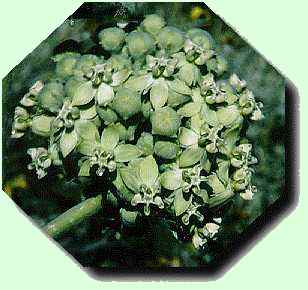
Asclepias species ( Milkweeds ) have a wide distribution in the America and Africa and the genus includes about 200 species of mainly perrenial herbs with tuberous roots. The scientific name refers to the Greek god of medicine, Asclepius, because of the supposed medicinal qualities of plants in this genus. However, many species are poisonous and contain cardiac glysosides, the toxicity of which may cause death in livestock or humans.
While A. syriaca the common milkweed has a poisonous milky sap, its toxic properties are destroyed by boiling, and the young shoots, tender top leaves, flower buds, and hard, unripe seed pods can be boiled (with several changes of water) and eaten. A. syriaca has been used as an alternative herbal remedy to Asclepias tuberosa (see below).
Most species are not really succulent and are characterised by a bitter thick milky sap, paired unlobed leaves and seed pods in which each flat brown seed is packed with a silky 'parachute'. Each thread of silk is a tinynobg tube of cellulose. Although the silk is too short to be spun into a thread, it was used during the 2nd World War as a filling for life-jackets.
The individual flowers are small but complex and borne in clusters. The florets have the five-fold symetry characteristic of the Asclepiadaceae, varying in colour from greenish white or yellow to red or purple. Asclepias flowers generally produce generous quantities of nectar, which may sometimes be seen forming droplets in the flower centres. They are attractive to bees, butterflies and humming birds.
Asclepias species are cultivated as the food plant of the caterpillars of several species of butterflies including the North American Monarch butterfly, and butterfiles are attracted to the flowers. Monarch butterflies, Danaus plexippus, are noted for their larvae accumulating cardiac glycosides contained in the milkweed plants upon which they feed, without toxicity to the larvae or the butterflies. This provides a chemical defense for the larvae, the pupae, and the adult butterflies, which are consequently unpalatable to birds, rapidly eliciting an avoidance reaction after injestion of even a single individual.
|
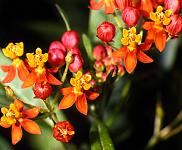
Asclepias curassavica originally bought as Asclepias tuberosa (Butterfly weed ) has a brilliant bi-coloured orange or yellow flower which atracts butterflies. It grows in dry soils in Mexico and is not frost-hardy, so in colder climates must be brought indoors for the winter. The seed horns contain numerous seeds, each with its own silk parachute.
Asclepias tuberosa from North America and Mexico is similar in appearance to A. curassavica, but the flower is more uniformly orange and is one of the few species without a milky sap. It is frost-hardy, even in the UK. One of the common names for Asclepias tuberosa is pleurisy root. The powdered tuberous roots have been used in Europe and the USA as a herbal remedy to treat lung and throat ailments, asthma and typhus fever, as the powder or an infusion is said to relieve cough and pain
Several Asclepias species are worth growing for their unusual flowers or decorative seed pods. Some non-succulent frost-hardy Asclepias species are suitable for use as garden plants and will attract butterflies into the garden. However, in warmer countries species of Asclepias have become serious weeds.
Fully frost hardy species such as A. hallii (Purple Silkweed), A. incarnata (Marsh Silkweed) and A. syriaca (Common Milkweed) present little problem bedded out in the garden and some attractive hybrids are also available. A sunny aspect is needed to encourage flowers, although A. incarnata prefers a moist, but free-draining soil. All species prefer a soil with plenty of humus.
Many Asclepias species can be grown in the UK as 'patio plants' using similar cultural conditions to fuchsias. A free-draining compost is suitable and suits both non-succulent and the few succulent species. The non-succulent species require plenty of water and fertiliser in hot weather and should, like fuchsias, not be allowed to dry out. Asclepias grow best in warm conditions, but may be overwintered at a minimum of 15°C. A large plant can be pruned in the Autumn and any die-back removed in the Spring.
In a sunny position Asclepias are free-flowering during the late summer and, if visited by bees and other insects, will produce seed pods freely. The seeds are wind-distributed and are packaged in the pods with large quantities of silk 'parachutes'. The seeds may be stored at 4°C and are easy to germinate as an insurance against losing plants during the winter. The seeds of some species may be shy to germinate, but respond to stratification.
|
|
All photographs by R.J. Hodgkiss except where stated. Click on pictures to load full size image. |
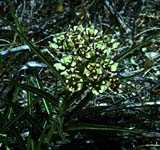 |
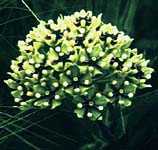 |
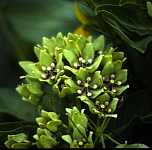 |
 |
|
Asclepias asperula,
Antelope Horns,
Ruby Road,
Az. May 1997 |
Asclepias viridis, Green Antelope Horns
in grassland at La Grange, Texas. April 1990 |
Asclepias curassavica,
colourful Mexican native grown in the UK. August 1996 |
|
 |
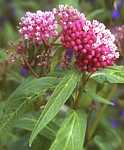 |
Left: Asclepias incarnata,Swamp Milkweed
A hardy perennial milkweed, widely distributed in wetland habitats in the USA and as far North as Canada. The white form (var. albiflora) is rarer in habitat, mainly confined to Missouri. Suitable for garden use in the UK and similar climates, where it attracts butterflies and bees. Seen here in cultivation, August 2004
|
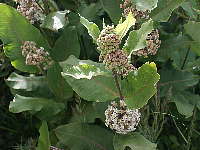 |
Left: Asclepias syriaca, Common Milkweed
A hardy perennial milkweed, widely distributed across the USA and naturalised in several European countries. The flowers were sweetly perfumed. The young shoots, tender top leaves, flower buds, and hard, unripe seed pods can be eaten after thorough boiling, which destroys the toxicity of the sap.
Photographed in sand dunes in the Netherlands by Co Hoeksel.
|
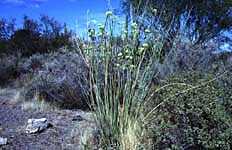 |
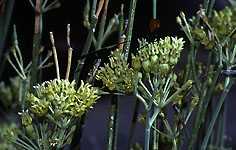 |
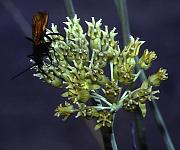 |
|
| Above: Asclepias subulata, Leafless Milkweed by the Puerto Blanco Drive of the Organ Pipe Monument, Arizona. USA May 1997 | |
|
|
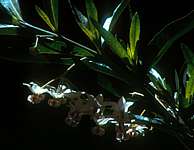 |
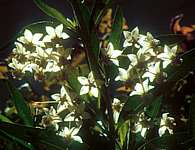 |
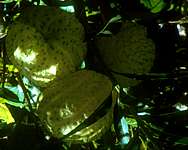 |
|
| Above: Asclepias (Gomphocarpus) physocarpa, in a garden in Camps Bay, Capetown, South Africa. Dec. 1998. |
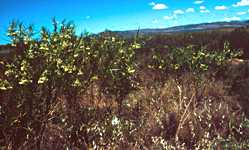 |
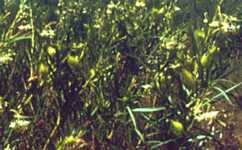 |
 | |
|
Above: Asclepias fructicosa, Little Karoo near Worcester, South Africa. December 1998.
Asclepias (Gomphocarpus) fructicosa has become a common weed of disturbed ground and roadsides in many parts of South Africa. The shrubby foliage, which may grow 2 m high, contains toxic cardiac glycosides which may cause the death of livestock. However, the dried leaves and roots are used as snuff in traditional medicines to relieve headaches and other pain, treat tuberculosis and as an emetic. The inflated seed pods have a sharply pointed end and are covered in short, stout hairs.
A. physocarpa has larger, more rounded and ornamental seed pods than A. fructicosa, although the two species may be easily confused. The inflated seed pods (diameter about 50mm) consist of a hairy, thin outer membrane, full of seeds each with a silky parachute. The silky material in the pods of these African Asclepias species has been used for tinder, hence the Afrikaans name tontelbos (tontel = tinder).
|

 Families of Succulent Plants
Families of Succulent Plants 





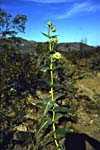
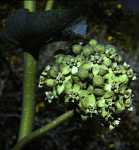
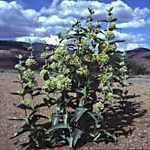
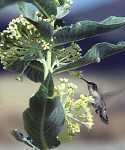
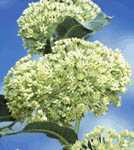








 Asclepias Picture Gallery
Asclepias Picture Gallery










